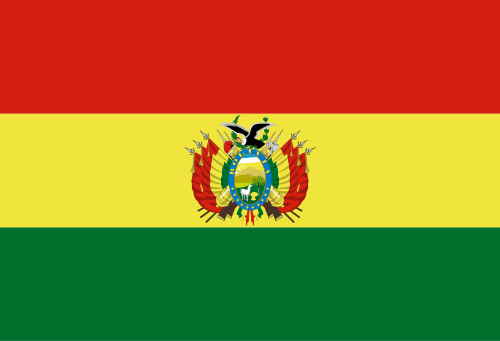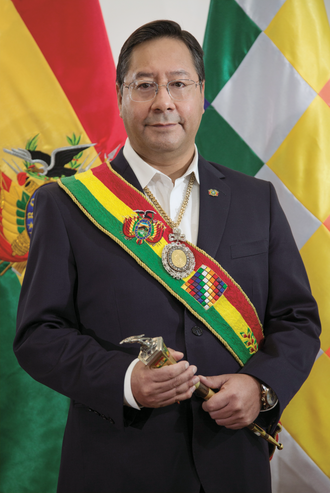Country Name: Bolivia
Country Flag:

Indigenous Roots: For thousands of years, Bolivia was home to advanced indigenous civilizations, including the Tiwanaku and later the Inca Empire, which left a lasting cultural and architectural legacy.
Colonial Legacy: In the 16th century, Spanish conquistadors arrived, incorporating Bolivia into the Viceroyalty of Peru. The discovery of silver in Potosí made Bolivia a crucial economic center for the Spanish Empire, but indigenous people suffered under harsh colonial rule.
Independence and Republic: After years of struggle, Bolivia gained independence from Spain in 1825, led by Simón Bolívar and Antonio José de Sucre. The country experienced political instability, territorial losses, and conflicts throughout the 19th and 20th centuries.
Modern Transformation: Bolivia has made significant strides in economic growth and social reforms since the early 21st century, particularly under indigenous leadership. However, challenges such as political tensions, economic inequality, and resource dependency remain.
Economic and Regional Influence: As a key member of regional organizations like the Andean Community and ALBA (Bolivarian Alliance for the Peoples of Our America), Bolivia plays an active role in South American geopolitics. Its vast natural resources, including lithium and natural gas, position it as an emerging economic player.
Sucre (constitutional capital)
La Paz (seat of government)
UTC-04:00 (Bolivia Time) – Applies to the entire country
Position in the world: 28
Total Area: 1.099 million square kilometers (424,164 sq mi)
Arable Land: 2.7%
Andean Highlands: The western region, home to the Altiplano, has a cool and dry climate with significant temperature variations between day and night.
Amazon Basin: The northern lowlands feature a tropical climate with high temperatures and heavy rainfall throughout the year.
Subtropical Valleys: The central valleys experience mild temperatures with distinct wet and dry seasons.
Chaco Plains: The southeastern region has a semi-arid climate, with hot summers and mild winters.
Bolivia is divided into 9 departments:
Flooding Risk: Heavy rains in the Amazon Basin and lowland areas can cause severe flooding.
Drought Threat: The Chaco region experiences periodic droughts, affecting agriculture and water supply.
Landslides: The steep Andean terrain is prone to landslides, especially during the rainy season.
Forest Fires: Dry conditions in forested areas can lead to wildfires, particularly in the Amazon region.
Bolivia is a landlocked country and does not have maritime claims. However, it maintains a long-standing claim to access the Pacific Ocean through Chile.
Power Structure:
Bolivia functions as a unitary presidential republic, meaning power is concentrated at the national level rather than being divided among states. The president holds significant authority, serving as both head of state and head of government. They are directly elected by the people for a five-year term and can seek one consecutive reelection. Bolivia’s governance includes elements of direct democracy, allowing citizens to participate in referendums and legislative initiatives.
Coalitional Calculus:
Bolivia’s political system is a multiparty democracy, where numerous parties compete for influence. Due to this fragmentation, forming a stable governing majority often requires coalition-building. However, political alignments can shift frequently, influenced by regional movements and indigenous groups, which play a crucial role in shaping national policies.
Left vs. Right Divide:
Bolivia’s political landscape has been dominated by left-wing leadership for much of the 21st century, particularly under the Movement for Socialism (MAS), which prioritizes state control of key industries, indigenous rights, and social programs. Meanwhile, opposition parties, typically aligned with center-right and right-wing ideologies, advocate for free-market policies, decentralization, and reducing state intervention in the economy. This ideological divide continues to shape Bolivia’s domestic and foreign policy decisions.
Allies
Bolivia’s geographic and economic positioning makes it a key player in South American regional affairs, balancing relationships with neighboring countries, global powers, and international organizations.
Southern Partners:
Andean Community (CAN): Bolivia collaborates with Peru, Ecuador, and Colombia to strengthen regional trade and cooperation.
MERCOSUR: Although not a full member, Bolivia maintains strong trade relations with Brazil, Argentina, Paraguay, and Uruguay within this economic bloc.
Bolivarian Alliance for the Peoples of Our America (ALBA): A socialist-oriented alliance with Venezuela, Cuba, and Nicaragua, focused on economic cooperation and political solidarity.
China: A major partner in trade, infrastructure development, and technological cooperation.
Russia: A strategic ally in energy, defense, and diplomatic relations.
United States: Relations are historically complex but remain significant in trade and investment.
European Union: A key source of foreign aid and investment, particularly in sustainable development initiatives.
Government Type: Unitary presidential republic
President:
Luis Arce (Term: 8 November 2020 – Present)

Top 3 Political Parties and Their Ideological Influence:
Movement for Socialism (MAS) – Left-wing, advocating state-led economic policies, indigenous rights, and social welfare programs.
Community Citizens Alliance (CC) – Center-left, promoting democratic governance, economic diversification, and moderate reforms.
Creemos (We Believe) – Right-wing, supporting free-market policies, decentralization, and conservative social values.
Election Cycle: Every five years
Upcoming Elections: 2025 Presidential and Legislative Elections
Regional Integration: Bolivia emphasizes economic and political collaboration within Latin America, actively engaging in UNASUR, CAN, and ALBA.
Economic Sovereignty: The government prioritizes state control over natural resources, particularly in lithium, gas, and mining industries.
Diversified Trade Partnerships: Strengthens ties with China, Russia, and South American partners while maintaining strategic engagement with the United States and the European Union.
Non-Interventionist Diplomacy: Advocates for neutrality in global conflicts, focusing on regional stability and economic cooperation.
Size in the world: 95
GDP: $44.3 billion (2024)
GDP per capita: $3,662 (2024)
Currency: Bolivian boliviano (Bs or BOB)
Dominant Economic Sector: Natural Resources & Agriculture
Market type: Mixed Economy
Social Landscape
Population: 12.1 million
Position: Class distribution
Upper: 5%
Middle: 45%
Lower: 50%
Gini Coefficient:
42.2 (where 0 = perfect equality and 100 = perfect inequality)
Language
Official language: Spanish
Other languages: Quechua, Aymara, Guarani, and 33 other Indigenous languages
Religion
Dominant religion: Catholicism
Other religions: Protestantism, Indigenous spiritual beliefs, Islam, Judaism, Bahá’í Faith